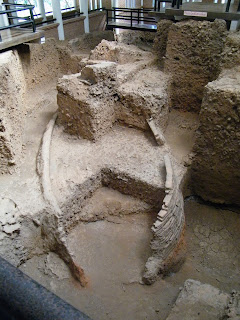Comme il fait vraiment froid, ces jours-ci, quelques flocons de neige ce matin !!! j'ai déserté la véranda-atelier et envahi le salon, (toutes mes excuses pour mes lecteurs du Nord, qui ont beaucoup de neige en ce moment, ici ce n'est rien en comparaison).
As it is really cold these days, a few snowflakes this morning! I deserted the veranda workshop and invaded the living-room, (apologies for my readers of the North, who have a lot of snow at the moment, here it is nothing).
I also have mixed some oxides with kaolin for new recipes of slip, this is not very reasonable to use without testing.
I also have mixed some oxides with kaolin for new recipes of slip, this is not very reasonable to use without testing.
Un nouveau mélange d'argile blanche et de porcelaine pour un engobe blanc, il tient bien au corps de la pièce, sans peler (porcelaine seule) et ne devrait pas couler (argile blanche seule), bon on verra !!!
A new mixture of white clay and porcelain for a white slip, it fits well to the claybody, without peeling (porcelain only) and should not sink (white clay only), well we will see!
Ma précédente recette d'engobe bleu a bien fonctionnée au début sous l'émail que j'utilise habituellement, mais trop d'argile rouge et ça fait des bulles en présence de la chaux.
J'ai également utilisé un nouveau feldspath, et ce que je croyais maitriser, je ne le maitrisais pas vraiment. L'épaisseur de l'émail y est pour beaucoup, ainsi que son vieillissement, la cendre d'os n'a pas le même effet après avoir reposé quelque temps.
Beaucoup de cogitations donc en ce moment, j'ai également des tests prometteurs pour de nouveaux émaux.
My previous recipe of blue slip has functioned with the glaze I usually used, but too much red clay and it makes bubbles in the presence of lime.
I also used a new feldspar, and what I thought I mastered, I do not really mastered. The thickness of the glaze has much to do, as well as aging, bone ash has no effect after sitting for some time.
Cogitations at this time, I also tested promising new glazes.

















































